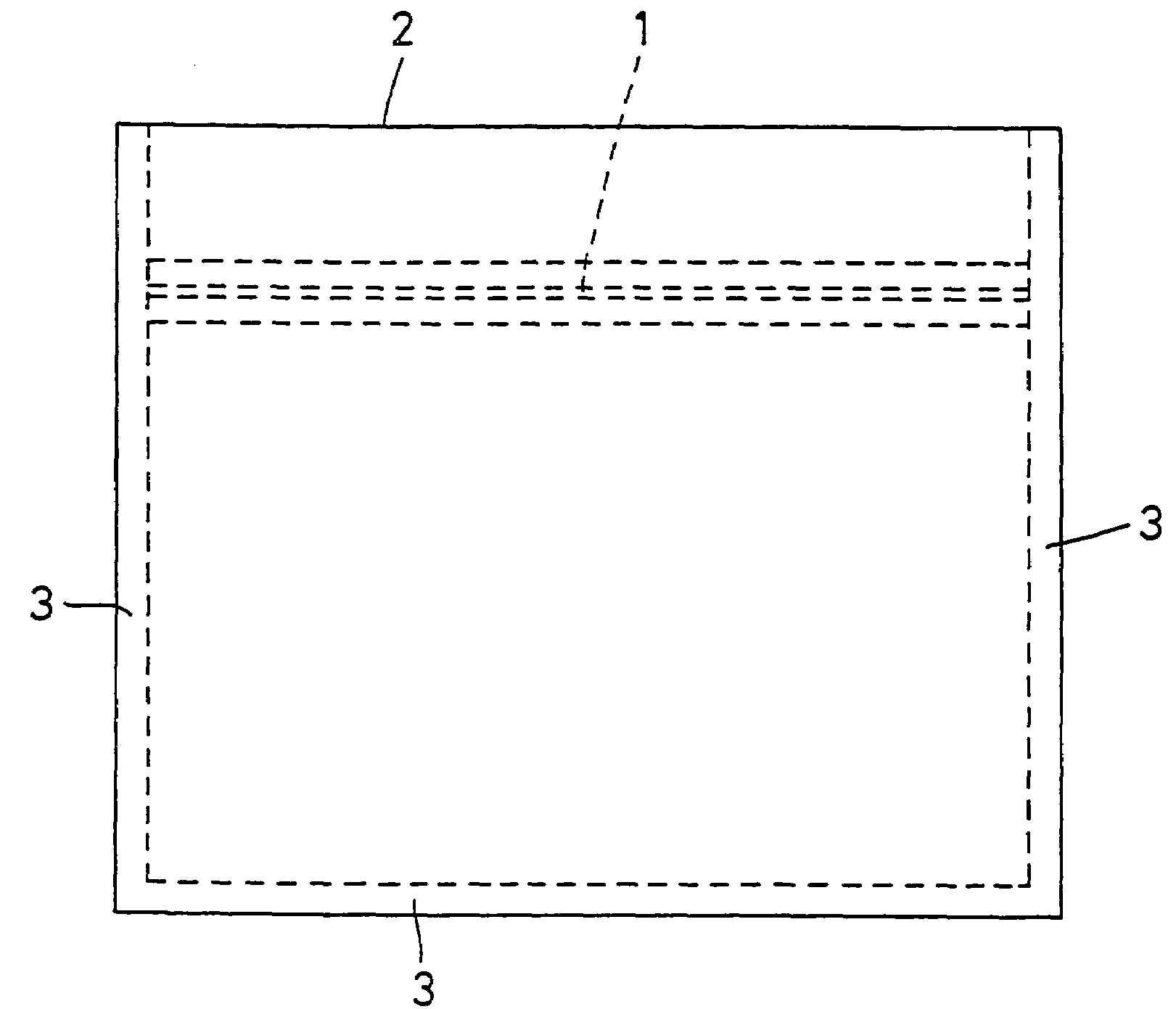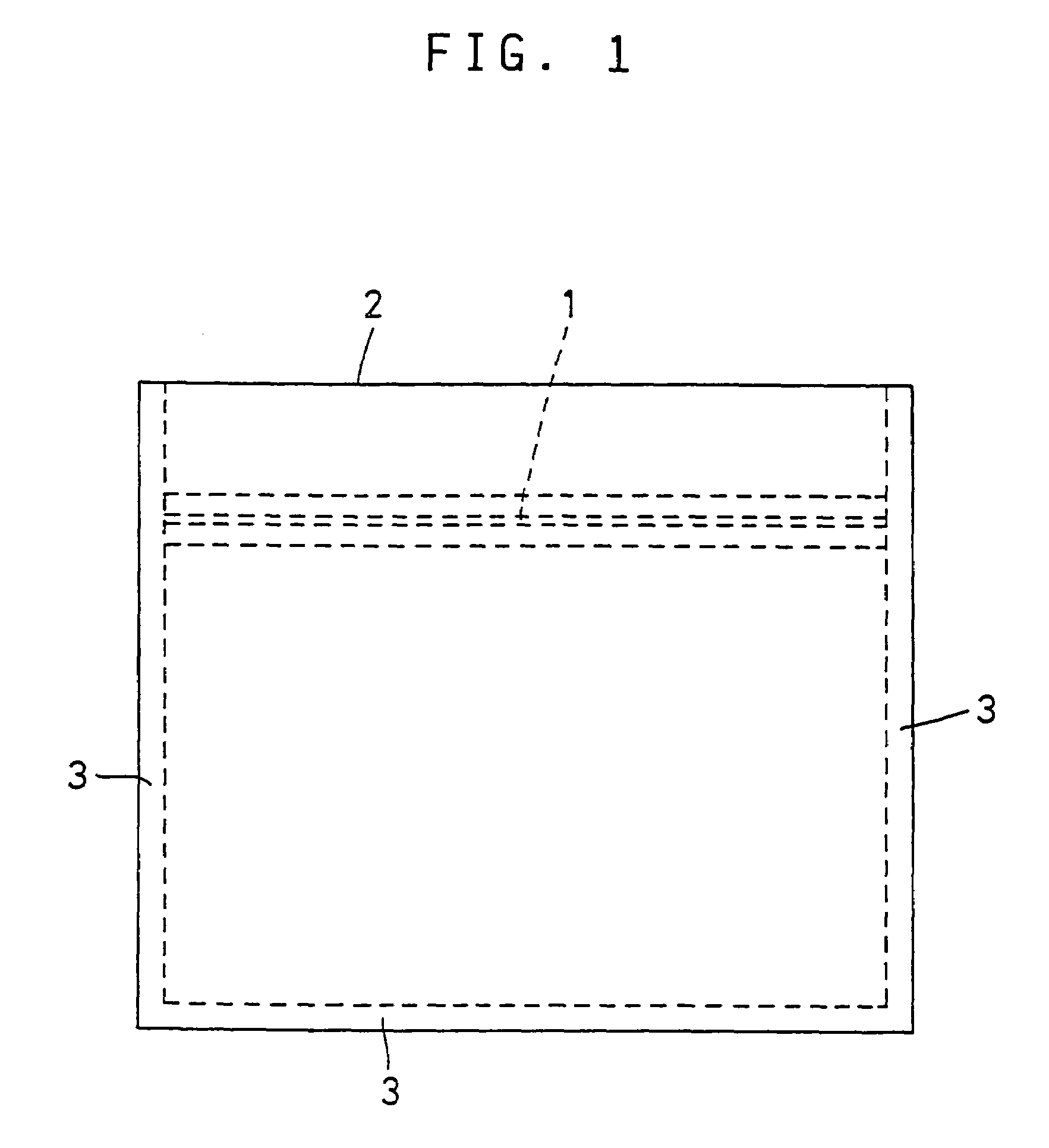Biodegradable bag
a biodegradable and bag technology, applied in the field of biodegradable bags, can solve the problems of short life of burial sites, damage to incinerators, and buried plastic products including such unburnable materials
- Summary
- Abstract
- Description
- Claims
- Application Information
AI Technical Summary
Benefits of technology
Problems solved by technology
Method used
Image
Examples
example 1
[0061]Manufacture of Aliphatic Polyester Film
[0062]Polybutylene succinate / adipate (trade name: Bionolle #3003, SHOWA High polymer Co.,Ltd), and polybutylene succinate (trade name: Bionolle #1001, SHOWA High polymer Co.,Ltd), which were both aliphatic polyesters, were mixed at the rate of 80:20 in weight ratio, sufficiently dried, melted in a single-screw extruder of 40 mm diameter, extruded through a T-die having a lip width of 500 mm, and taken up while cooling by bringing into contact with casting rolls having their temperature set at 30° C. by a warm water circulator to manufacture a film having a thickness of 30 μm.
[0063]The film was slit to a width of 360 mm, and taken up continuously. For the film alone, Δ Hm, tackiness and transparency were measured by the above methods. The evaluation thereof is shown in Table 1.
Method of Manufacturing a Biaxially Oriented Film of Polylactic Acid
[0064]A polylactic acid having a weight-average molecular weight of 200 thousand (made by Cargill...
example 2
[0068]Polybutylene succinate / adipate (trade name: Bionolle #3003 made by SHOWA High polymer Co.,Ltd), and polybutylene succinate (trade name: Bionolle #1001 made by SHOWA High polymer Co.,Ltd), which were both aliphatic polyesters, were mixed at the rate of 80:20 in weight ratio, and ethylenebisstearate amide (trade name: KAO wax EB-FF made by KAO Corporation) was added by 0.02 parts by weight as an additive for anti-blocking. The mixture was put in a unidirectional twin-screw extruder of 25 mm diameter, melt-mixed at 190° C., extruded into a water bath in strands, and finely cut to pellets. The pellets were dried in a dehumidifying dryer to remove moisture, melted in a single-screw extruder of 40 mm diameter, extruded through a T-die having a lip width of 500 mm, and cooled while bringing into contact with casting rolls having their temperature set at 30° C. by use of a warm water circulator and taken up to manufacture a film having a thickness of 30 μm. Then, films and bags were o...
PUM
| Property | Measurement | Unit |
|---|---|---|
| elongation | aaaaa | aaaaa |
| carbon number | aaaaa | aaaaa |
| Tg | aaaaa | aaaaa |
Abstract
Description
Claims
Application Information
 Login to View More
Login to View More - R&D
- Intellectual Property
- Life Sciences
- Materials
- Tech Scout
- Unparalleled Data Quality
- Higher Quality Content
- 60% Fewer Hallucinations
Browse by: Latest US Patents, China's latest patents, Technical Efficacy Thesaurus, Application Domain, Technology Topic, Popular Technical Reports.
© 2025 PatSnap. All rights reserved.Legal|Privacy policy|Modern Slavery Act Transparency Statement|Sitemap|About US| Contact US: help@patsnap.com



